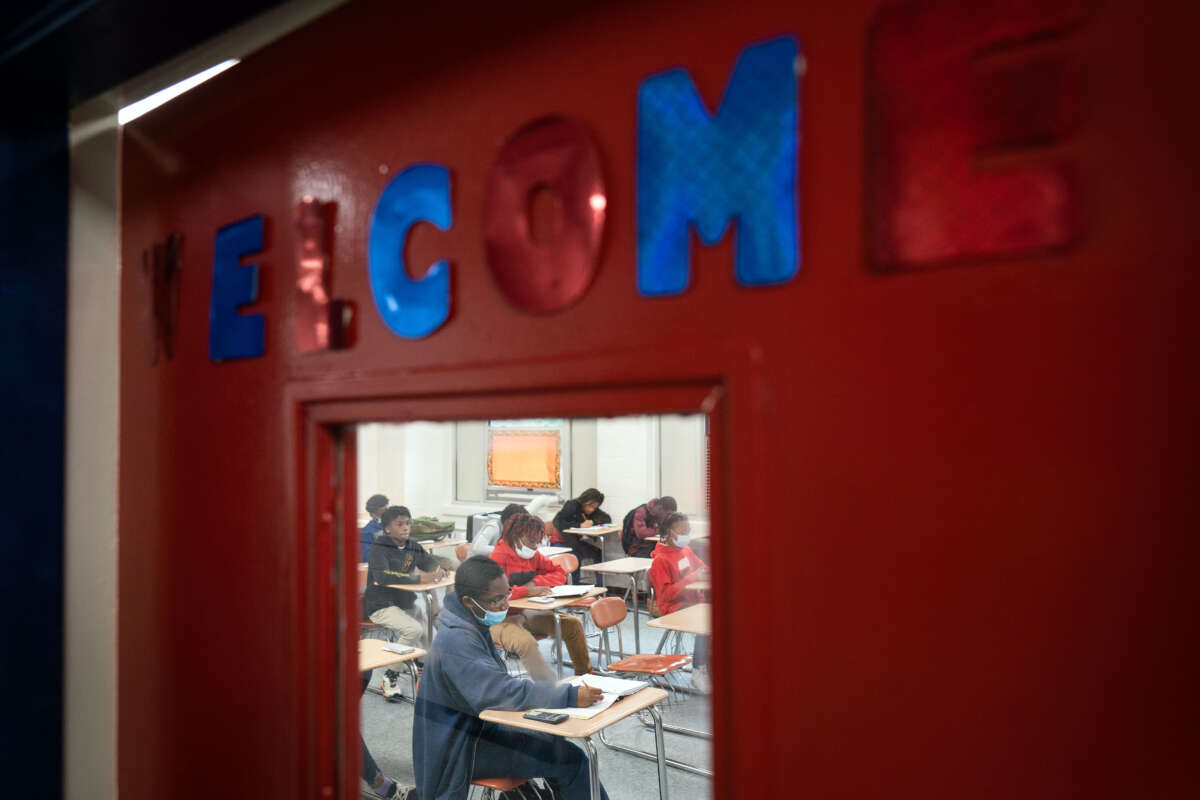Honest, paywall-free news is rare. Please support our boldly independent journalism with a donation of any size.
A new report details the wage gap between U.S. teachers and other workers with similar levels of education, and suggests that the discrepancy is playing a major role in the country’s current teacher shortage.
The Economic Policy Institute (EPI) report, published in late September, finds that educators are earning 26.4 percent less in income than their degree-equivalent peers. While educators often receive generous benefits packages, the report notes, teachers still earn 17 percent less than other professionals with similar levels of college education, even taking the value of those benefits into account.
EPI calls the gap a “pay penalty” for teachers, and notes that, while other workers with similar education levels have seen their incomes more closely adjusted and increased to the rate of inflation in recent years, teachers’ incomes, for the most part, have stagnated, resulting in a loss in “real wages.”
“Teachers have one of the most consequential jobs in the country — they have the future of the U.S. in front of them every day,” the report from EPI states. “But teaching is becoming a less appealing career choice for new college graduates. … Low pay makes recruiting and retaining highly qualified teachers difficult.”
“A lack of well-qualified teachers means we cannot equip future tech innovators, researchers, and educators with the training they need to emerge as leaders,” EPI added.
Teachers earned just 73.6 cents for every dollar other professionals made in 2022, the organization found. To remedy the situation — and to ensure that top-quality candidates are recruited to become educators — EPI recommends that state and local governments “show respect for the profession by significantly boosting teacher pay.” The report notes that achieving that end may require federal assistance.
The report also calls for strengthening teachers’ unions and bargaining rights. “Public-sector collective bargaining should be expanded since unions can advocate for improved job quality and a higher level of resources,” the report says.
Low teacher salaries aren’t the sole reason why fewer college-age Americans are pursuing the profession than in previous generations. Teachers also face poorer conditions in classrooms and relentless attacks from right-wing groups who oppose lessons on topics like LGBTQ issues and racism.
“With low teacher pay, challenging classroom and school conditions, and long-standing underinvestment in education, coupled with the new anti-critical-race-theory and anti-anything-equity movement, teachers are under greater strain,” Katherine Norris and Kathryn Wiley, education professors at Howard University, wrote in a joint op-ed earlier this year for EducationWeek. “These factors have led to a crisis in our nation’s classrooms unlike anything we have seen in our careers.”
Press freedom is under attack
As Trump cracks down on political speech, independent media is increasingly necessary.
Truthout produces reporting you won’t see in the mainstream: journalism from the frontlines of global conflict, interviews with grassroots movement leaders, high-quality legal analysis and more.
Our work is possible thanks to reader support. Help Truthout catalyze change and social justice — make a tax-deductible monthly or one-time donation today.
